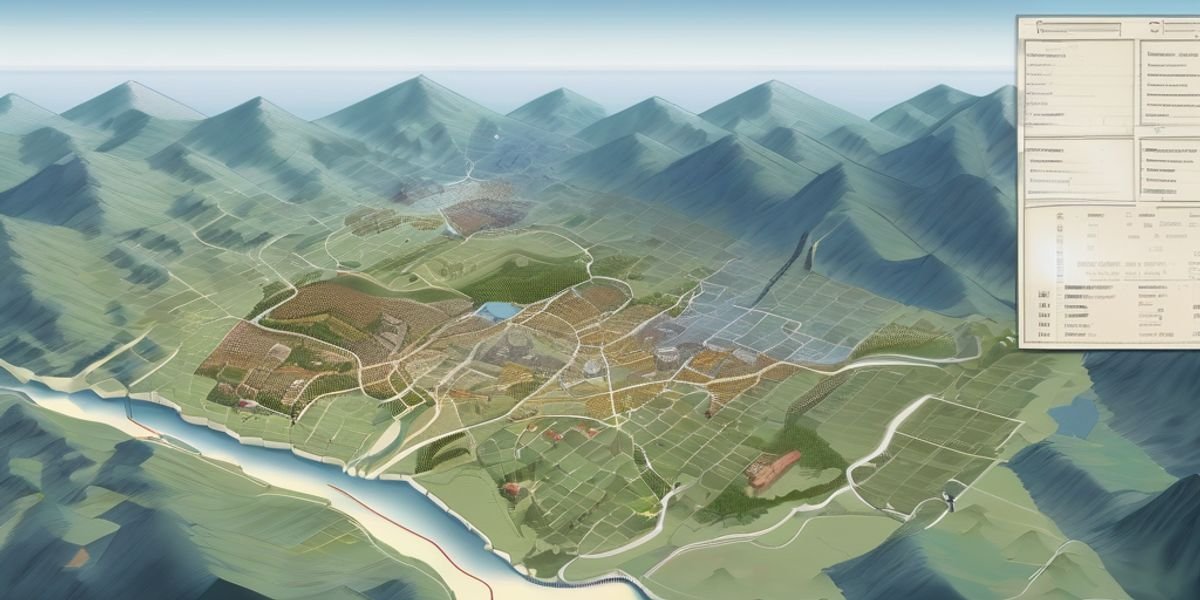The article ‘Map View’ delves into the multifaceted aspects of map viewing technology and its application across various industries. From the basic understanding of map views to the latest technological advancements and challenges, the article provides a comprehensive overview of the landscape of map viewing, its importance in strategic planning, and future trends that are shaping this field.
Key Takeaways
- Map views are essential for visualizing geographical data, aiding in decision-making across multiple sectors.
- Technological advancements like 3D mapping and augmented reality are enhancing the interactivity and utility of map views.
- Map views play a critical role in urban planning, environmental monitoring, and transportation logistics, improving efficiency and sustainability.
- User interface design is crucial for making map views accessible and usable on various devices, with a focus on mobile and desktop compatibility.
- Future trends in map viewing include the integration of predictive analytics, IoT, and AI, promising to revolutionize how we interact with geographical data.
Understanding Map Views
Definition and Importance
We often take for granted how essential maps are in our daily lives, from navigating city streets to planning international travel. Maps are not just tools; they are the gateways to understanding our world. They help us visualize spatial information and make sense of complex data through a simplified representation of geography.
Types of Map Views
There are several types of map views that cater to different needs and purposes:
- Topographic Maps: Show the physical features of an area.
- Political Maps: Highlight territorial boundaries.
- Climate Maps: Depict weather patterns.
- Economic or Resource Maps: Show the distribution of resources.
- Road Maps: Essential for navigation.
Each type of map view serves a unique purpose, enhancing our ability to analyze and interpret data.
Choosing the Right Map View
Selecting the right map view depends on what you need to achieve. If you’re involved in urban planning, a detailed topographic map might be most useful. For environmental studies, a climate map provides critical information about weather patterns. It’s all about matching the map view with the intended purpose to optimize the outcome of your projects.
Technological Advances in Map Viewing
Interactive Maps
We’ve seen a huge leap in how we interact with maps, thanks to the advent of interactive maps. These tools allow us to zoom, pan, and click for more details, transforming the user experience from static to dynamic. They’re particularly useful in educational settings and for businesses analyzing demographic data.
3D Mapping
The introduction of 3D mapping technology has revolutionized our perception of space. By adding depth to the traditional flat maps, we can now explore landscapes and cityscapes in vivid detail. This technology is not just about aesthetics; it’s crucial for industries like real estate and urban planning, where spatial awareness is key.
Augmented Reality Maps
Augmented reality (AR) maps take things a step further by overlaying digital information onto the real world. Imagine looking through your phone’s camera to find directions superimposed on the actual street. This blend of digital and real-world elements makes AR maps invaluable for navigation and tourism. They’re also being tested in novel environments, such as space, to see how well the technology functions in microgravity.
Map View Applications in Various Industries
Urban Planning
We’re seeing an incredible integration of map views in urban planning. City planners utilize detailed maps to visualize zoning, infrastructure, and development projects. This helps in making informed decisions that shape the future of our cities. For example, heatmaps are often used to identify high-density areas needing more public amenities.
Environmental Monitoring
In environmental monitoring, map views are crucial. They allow us to track changes in ecosystems, monitor endangered species, and manage natural resources more effectively. Here’s a quick look at how we use maps:
- Tracking deforestation and illegal logging activities
- Monitoring air and water quality across different regions
- Observing migration patterns of wildlife
Transportation and Logistics
Map views revolutionize how we manage transportation and logistics. Real-time tracking of vehicles and goods ensures efficient route management and timely deliveries. For instance, logistics companies use augmented reality maps to enhance the accuracy of their operations, making it easier to navigate complex routes and manage large fleets.
User Interface Design for Map Views
Accessibility Features
We’ve always believed that everyone should have access to map technologies, regardless of their abilities. That’s why we focus on features like screen readers, voice commands, and adjustable text sizes to ensure our maps are usable by as many people as possible.
Customization Options
Customizing your map view is key to a tailored experience. Users can change map styles, toggle various data layers, or even adjust the interface to better suit their needs. This flexibility enhances user engagement and satisfaction.
Mobile vs Desktop
The experience of using maps varies significantly between mobile devices and desktops. On mobile, we prioritize quick interactions and easy navigation, while desktop versions offer more detailed data and complex functionalities. It’s crucial to optimize the interface for each device to provide the best user experience.
Challenges in Modern Map Viewing
Data Privacy Concerns
In our world of interconnected digital landscapes, data privacy stands out as a significant hurdle. We’re constantly grappling with how to protect user data while providing enriched map services. It’s a delicate balance between utility and confidentiality, and getting it right is crucial for trust and compliance.
Accuracy and Reliability
Ensuring the accuracy and reliability of maps is no small feat. We often encounter discrepancies between map data and real-world conditions, which can lead to confusion and inefficiency. It’s our job to minimize these issues, ensuring that maps are not only accurate but also dependable.
Real-time Data Integration
Integrating real-time data into map views presents unique challenges. Traffic conditions, weather updates, and other dynamic elements must be accurately represented to enhance the user experience. This requires sophisticated systems and constant updates, which can be both resource-intensive and technically demanding.
Future Trends in Map Viewing
Predictive Analytics
We’re seeing a huge shift towards using predictive analytics in map viewing. This means not just seeing where things are, but predicting where they will be. It’s all about forecasting future scenarios based on current data, which can be a game-changer for everything from traffic management to disaster response.
Integration with IoT
The integration of map viewing with the Internet of Things (IoT) is making our maps smarter than ever. Imagine your map not only showing you the location but also providing real-time data from various sensors around the city. This could include everything from weather conditions to traffic updates, making our interactions with maps more dynamic and informative.
Advancements in AI for Mapping
Artificial intelligence is revolutionizing the way we interact with maps. AI can automate complex processes like updating maps in real-time and generating highly accurate predictive models. This advancement is not just improving the efficiency of map viewing but also enhancing the user experience by providing more precise and actionable insights.
Conclusion
In conclusion, the exploration of map views across various platforms and applications reveals a dynamic and essential tool in our daily lives and professional environments. From enhancing navigation to facilitating complex data analysis, map views offer a unique perspective of our world. As technology advances, the integration and functionality of map views will only become more sophisticated, promising even greater applications and innovations in the future.
Frequently Asked Questions
What is a map view and why is it important?
A map view is a visual representation of geographic data on a map. It is important because it helps in understanding spatial relationships and patterns, aiding in decision-making and planning across various fields.
What are the different types of map views?
There are several types of map views including topographic, satellite, street, and thematic maps, each serving different purposes depending on the data and user needs.
How do technological advances affect map viewing?
Technological advances like interactive maps, 3D mapping, and augmented reality enhance the user experience by providing more dynamic and immersive ways to view and interact with geographic data.
What role do map views play in urban planning?
Map views are crucial in urban planning as they provide a clear visual representation of land use, infrastructure, and demographic data, helping planners make informed decisions about development and resource management.
What are some challenges faced in modern map viewing?
Challenges include ensuring data privacy, maintaining accuracy and reliability of maps, and integrating real-time data to keep maps up-to-date.
What future trends are expected in map viewing?
Future trends include the use of predictive analytics, integration with IoT devices, and advancements in AI to enhance the functionality and accuracy of map views.



